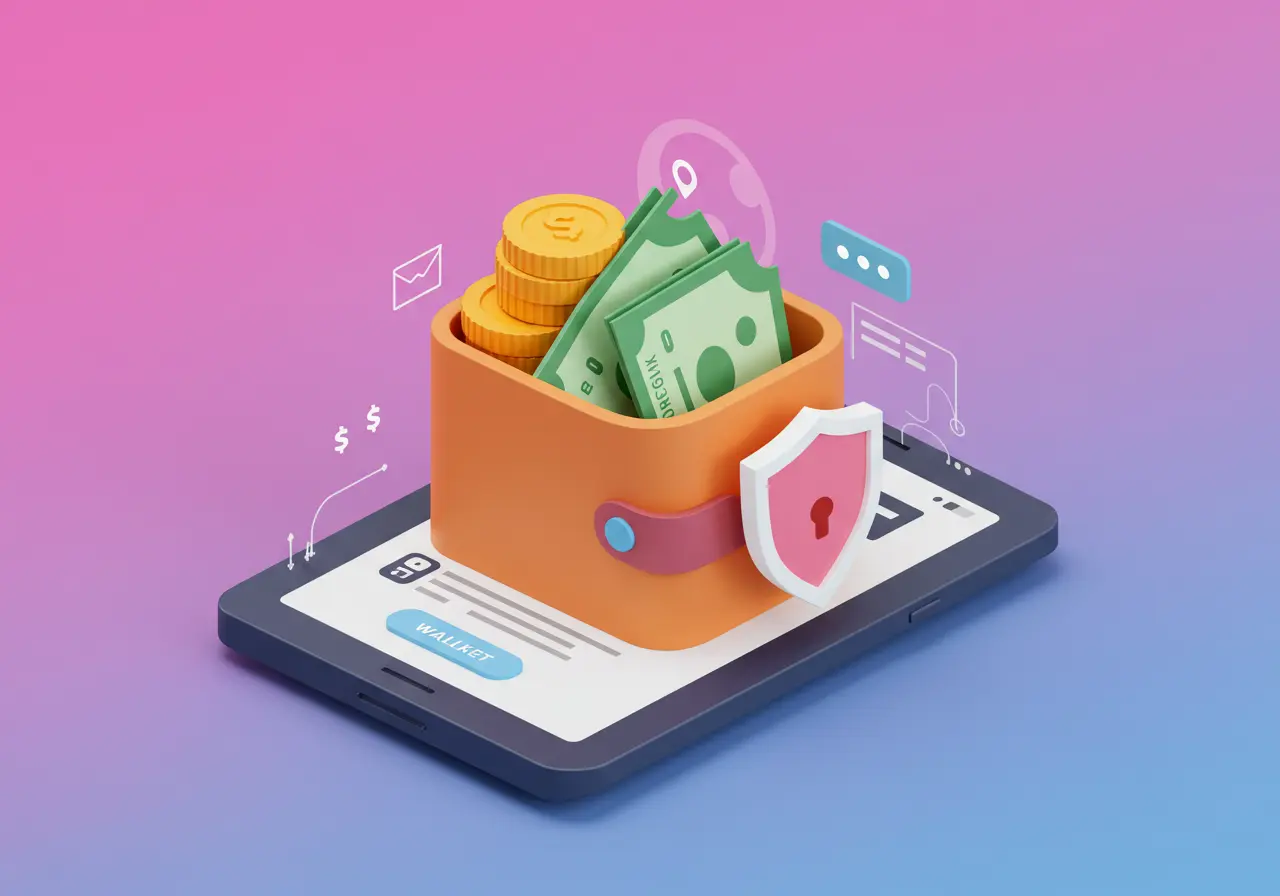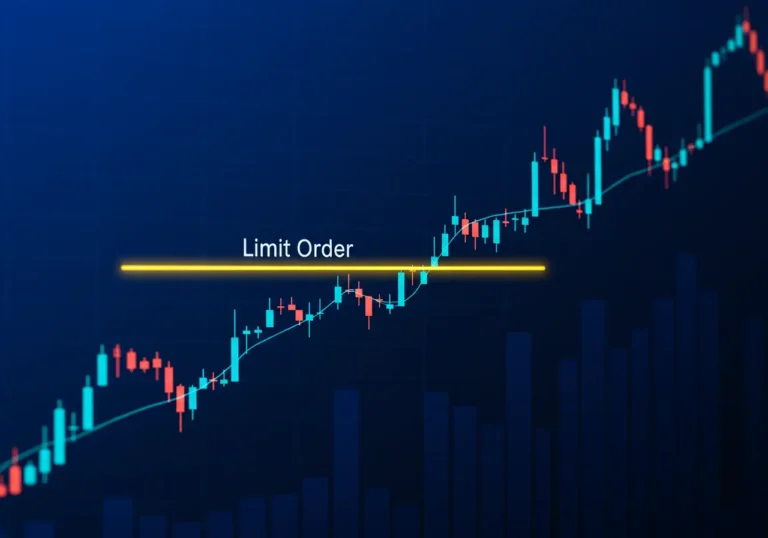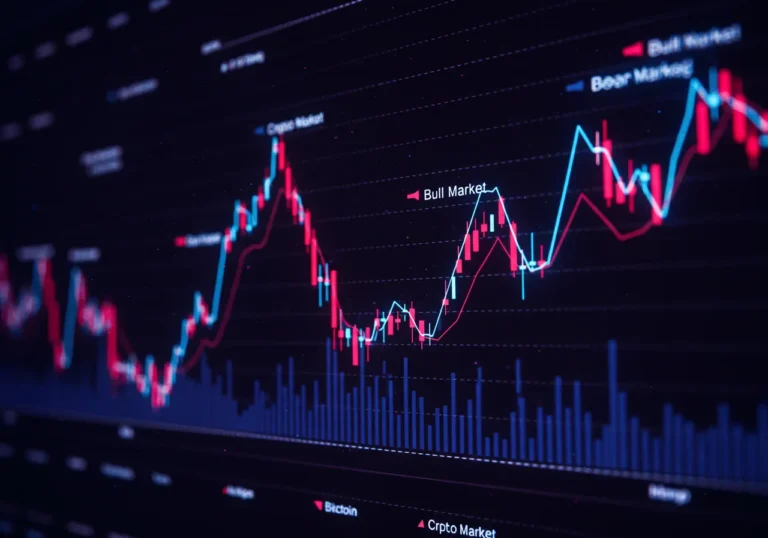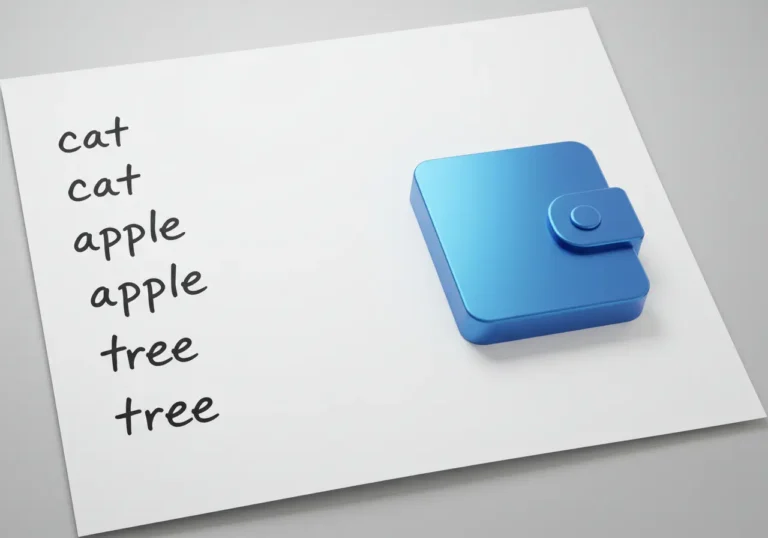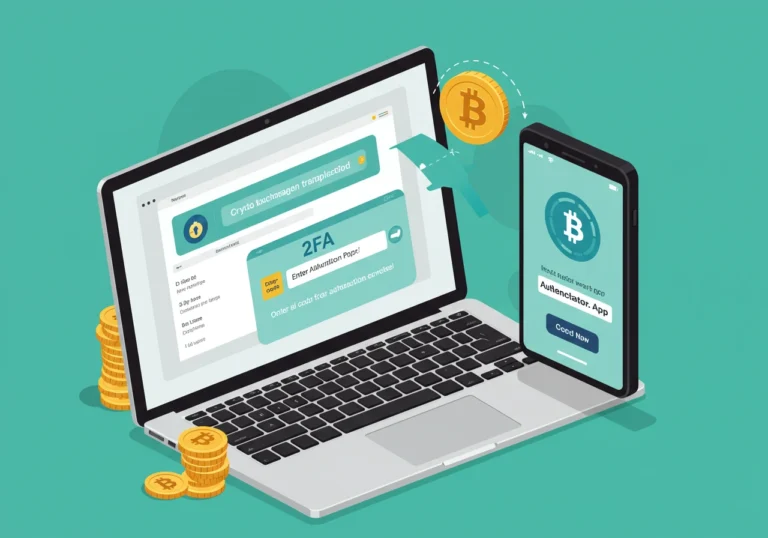How to Use a DEX (Decentralized Exchange) Without Getting Scammed
How to Use a DEX can feel like that first walk in a new place. But it does not have to be dangerous. With simple habits, clear checks, and a few safety tools, you can trade on DEX platforms without falling for tricks. In this article I’ll walk with you slowly and clearly.
How to Use a DEX — what it is and why people choose them

A DEX is a website or app that lets people swap tokens directly from their wallets. There’s no central company holding your funds. That freedom is powerful. It also means you are responsible for your own safety.
People choose DEXs because they offer access to new tokens, often lower friction, and a sense of control. But that control comes with responsibility. That’s why DEX security tips and DEX security measures matter. They are the simple rules that keep your money safe.
The simple truth: most scams rely on people, not code
Before we get into specific steps, understand this: many DEX scams succeed because someone trusted the wrong thing. A fake website, an urgent message asking to sign a contract, or a shiny token that asks for permission can all trick a careful person who is rushing.
The good news is that the same human habits that help in real life — pausing, verifying, testing — work here too. If you slow down and follow a few practices, you will be far less likely to lose money.
Basic safety habits before you trade
These are the foundation. Think of them as locking the door and checking your pockets before you leave the house.
- Use a secure wallet. Hardware wallets (like Ledger or Trezor) are the safest for large amounts. For small trades, a reputable browser wallet connected to a hardware wallet is a good mix.
- Keep your seed phrase private and offline. Write it on paper or steel — never store it in a note app or send a photo.
- Use a clean device. Keep your computer and phone free of malware. Update software regularly.
- Protect email and accounts with strong passwords and two-factor authentication. If a hacker can access your email, they can social-engineer other platforms connected to you.
- Know the network. Make sure the token and the DEX are on the same blockchain (for example, Ethereum, BSC, or Polygon). Sending across the wrong network is a common source of loss.
These habits are the first line of defense and cover most early mistakes people make.
Choosing a trustable DEX: what to look for
Not all DEXs are equal. Some are widely used and audited, others are brand-new and risky. Here’s how to pick safer places to trade.
- Look for reputation and volume. DEXs with steady trading volume and many users are generally safer. Big names are not foolproof, but tiny unknowns often have more risk.
- Check for audits. Many reputable DEXs publish smart contract audits. Audits are not perfect, but they help.
- See how the UI behaves. Real DEXs have consistent, well-designed interfaces. If a site looks poorly made, be cautious.
- Confirm the official link. Go to a DEX through a trusted directory or bookmark. Avoid clicking links from random messages.
- Prefer open-source projects with a community. A transparent team and active community can be signs of trustworthiness.
These checks are easy and they filter out a lot of bad actors.
Wallet connection safety: what to watch for
Connecting your wallet is the key moment. It’s also when many people trip.
- Use a hardware wallet for signing whenever possible. If you connect your browser wallet to a hardware wallet, transactions must be approved physically on the device. That’s a huge safety boost.
- Check what permissions you grant. Some DEX actions ask for token approvals. Unlimited approvals let a contract spend any amount of that token from your wallet. Grant only what you need and revoke unnecessary approvals later.
- Don’t approve transactions you don’t understand. If a pop-up asks you to sign a message with unfamiliar text, pause and investigate.
- Verify the website URL and SSL padlock. A padlock does not prove safety, but a missing one is a red flag.
- Use a dApp browser or wallet with a clear connection interface so you always see which site is connected.
A thoughtful pause at the connection step saves a lot of trouble.
Spotting common DEX scams and traps
Here are scams I see again and again — and how to avoid each one.
Fake DEX clones
Attackers create copies of real DEXs. The site looks right but the URL is slightly different. Always double-check the address and prefer bookmarks.
Malicious tokens and rug pulls
Some tokens are created to attract buyers and then the developers remove liquidity, making the token worthless. Check a token’s holders, liquidity, and how long liquidity has been locked. If founders hold too much of the supply, that’s a warning sign.
Phishing links and fake support
Never paste your seed phrase anywhere or give it to “support.” Official teams will never ask for it. When in doubt, go to the project’s verified site and channels.
Fake token approvals
Signing a contract can grant spending power. Only approve exact amounts for trusted contracts. Use tools like revoke services to check and remove dangerous approvals.
Pump-and-dump schemes
Large swings driven by coordinated buying can lure newcomers. Be wary of sudden hype and promises of quick riches.
Understanding these scams helps you avoid them. When in doubt, do not rush.
Practical step-by-step approach to a safe trade
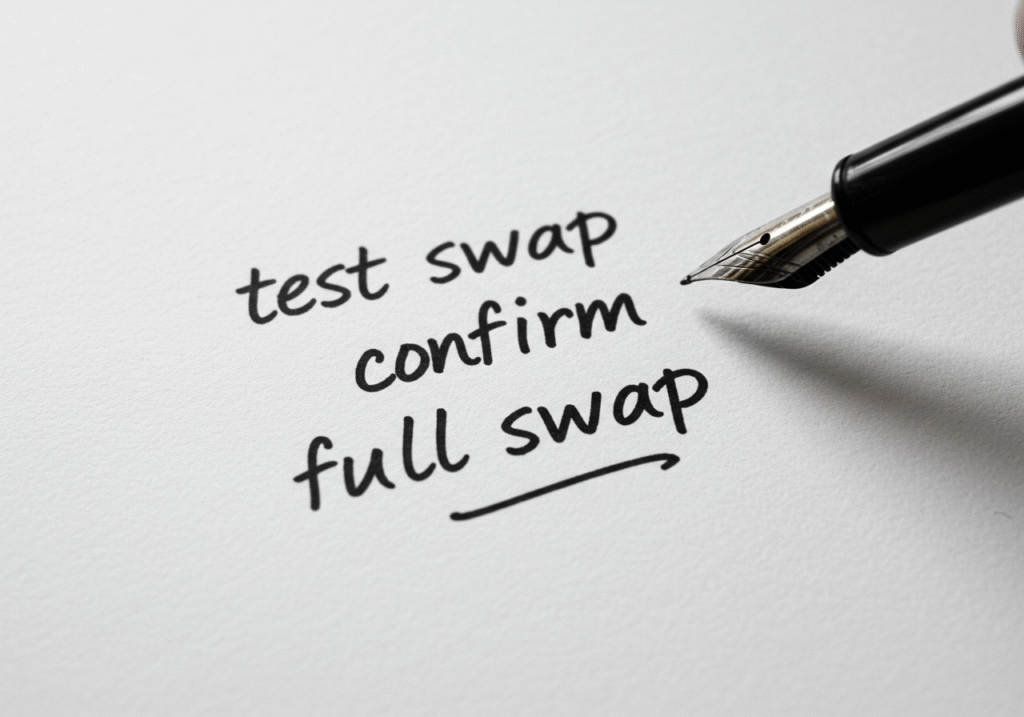
Here’s a simple flow you can use every time you trade on a DEX. Think of this as a habit you practice until it becomes second nature.
- Confirm the project and DEX official links from multiple sources.
- Prepare your wallet: update it, connect a hardware wallet if possible, and ensure no unknown extensions are installed.
- Copy the token contract address from the project’s official site or reputable aggregators — never trust a token link from a chat.
- Make a tiny test swap first. Send a small amount to swap so you can watch the process and check the result.
- Check the transaction on a block explorer by hash (transaction ID). Confirm it matches what you expected.
- If the test succeeds, proceed with the full amount. If not, stop and seek help from trusted community channels.
- After trading, close the connection and, if needed, revoke permissions for contracts you no longer use.
A small test trade is the single best habit for preventing loss.
Fees, slippage, and front-running: what you need to know
Three practical things that affect your trade outcome:
- Fees: Different chains and times have different costs. Check network fees before you trade. Sometimes waiting a bit can save a lot.
- Slippage: This is the difference between the expected price and the executed price. Big orders in thin markets can suffer high slippage. Set an acceptable slippage tolerance and split large trades.
- Front-running and MEV: On some chains, others can see your pending transaction and try to place theirs to profit. Using smaller trades and better timing reduces risk.
These are not meant to scare you. They’re mechanics to be aware of and manage.
Extra tools that help protect you
There are useful tools and services that make DEX trading safer.
- Token trackers and analytics: Sites that show token holders, liquidity, and rug-pull warnings.
- Approval checkers: Tools that list which smart contracts have permission to spend your tokens so you can revoke dangerous approvals.
- Block explorers: After every transaction, check the TXID to confirm success.
- Price oracles and aggregators: Services that compare prices across DEXs so you find a fair rate and avoid bad routes.
Use these tools as regular parts of your routine.
What to do if something goes wrong
If you suspect fraud or a problematic transaction, act methodically:
- Gather details: transaction ID, addresses involved, screenshots.
- Revoke approvals where possible.
- If funds went to an exchange, contact their support with proof. Sometimes exchanges can freeze funds, but success is not guaranteed.
- Report scams to community channels and platforms so others can be warned.
Recovery may not always be possible, but quick, calm action gives you the best chance.
Safest DEX platforms — general pointers

I won’t endorse specific platforms because new ones appear and things change. Instead, use these pointers to judge a platform’s safety:
- Active user base and liquidity.
- Public audits and transparent contracts.
- Clear, consistent UI and official channels.
- Reputable teams and community oversight.
These signs help you find the most trustworthy decentralized exchanges for your needs.
Everyday examples to make this real
Imagine you want to swap Token A for Token B:
- You check Token B’s contract on the official project page.
- You paste the contract address into the DEX to avoid fake tokens.
- You connect your wallet, but use a Ledger device to sign.
- You set slippage to a small number and make a test swap for a tiny value first.
- The test clears. You do the full swap and then disconnect and revoke approvals.
It’s simple. The calm, repetitive steps keep you safe.
Final thoughts — small habits protect big holdings
Learning How to Use a DEX safely is not about memorizing complex rules. It’s about building a few reliable habits: verify, test, and protect. If you take nothing else from this article, remember the tiny test trade and the habit of checking approvals. Those two moves alone stop a lot of common scams.
Trading on DEXs can be empowering. It’s like walking a new street with a trustworthy friend — you learn the safe corners and avoid the risky alleys. With time, the process becomes natural and your confidence grows.
Key takeaways (quick list)
- Verify DEX and token links before connecting.
- Use hardware wallets when possible.
- Send a small test swap first.
- Limit token approvals and revoke when not needed.
- Check transactions on a block explorer.
- Watch slippage and fees.
- Use trusted tools for token research and approval checks.
- Pause and verify whenever an action asks for unusual permissions.
Frequently Asked Questions
Q: Is using a DEX safer than a centralized exchange?
A: It depends. DEXs avoid custody risk (no central party holding your funds), but they put more responsibility on you. Centralized exchanges offer convenience and customer support but concentrate risk. Both have trade-offs.
Q: What is a test swap and how much should it be?
A: A test swap is a tiny trade to confirm everything works. Make it a small amount you can afford to lose — often a few dollars worth of the asset or a tiny fraction of the token.
Q: How do I check if a token is a scam?
A: Look at token holders, liquidity locks, and the official project links. If the team holds a huge share, or liquidity can be removed easily, be cautious. Use community resources and token analytics to verify.
Q: What are token approvals and how do I revoke them?
A: Approvals let smart contracts spend tokens from your wallet. Use tools that show your approvals and offer revoke functions. Only approve what you need.
Q: Should I use a new address or wallet for high-risk trades?
A: Using a separate wallet for experimenting reduces the risk to your main funds. For small trades, it’s a good safety practice.
Table of Contents

Hello, I’m Edmilson Dias, founder of CoinBringer. I created this platform to guide people through the fast-moving world of cryptocurrency with clarity and safety. With years of research in blockchain and digital security, my goal is to translate complex topics into practical knowledge, offering reliable tutorials, safety insights, and guidance for both newcomers and experienced users.
Discover more from CoinBringer
Subscribe to get the latest posts sent to your email.

